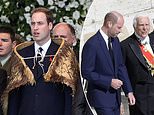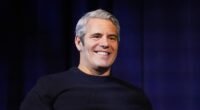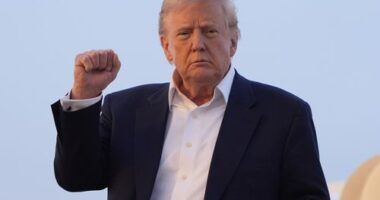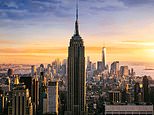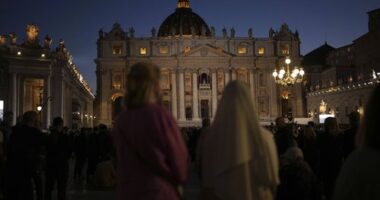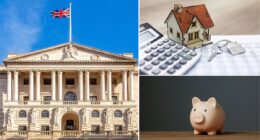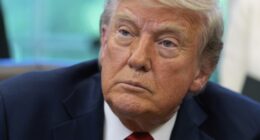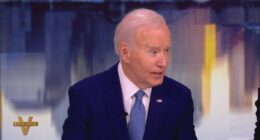
It is during times of crisis that world leaders prove they can navigate difficult situations – and the royals are no exception.
The Prince of Wales showed this innate ability through his diplomatic efforts at Pope Francis’s funeral.
William was praised for a subtle gesture that helped facilitate a meeting between US President Donald Trump and Ukrainian premier Volodymyr Zelensky.
He decided to quietly move away from a group that had gathered, consisting of political figures such as Sir Keir Starmer, Mr. Trump, Mr. Zelensky, and French president Emmanuel Macron.
The Ukrainian leader described the summit as a ‘positive meeting with the possibility of becoming historic’, while the White House characterized it as ‘highly productive’.
The Prince of Wales displayed his canny capability to read the room like a true statesman and King-in-waiting.
William had already shown his ability to keep a calm head in the midst of a crisis when in 2011, at just 28-years-old, he was sent to Christchurch in New Zealand.
The city had been devastated by a 6.1-magnitude earthquake which left 185 dead. It remains the worst natural disaster to hit the country this century.
During this visit, the prince gave a moving speech to more than 40,000 mourners.
William, who was there representing Queen Elizabeth II, spoke of his sympathy and admiration for the people of Christchurch.
‘I convey to you Her Majesty’s message of deep sympathy and condolence,’ he said in his address.
‘My grandmother once said that grief is the price we pay for love. Here today, we love and we grieve,’ William added to loud applause.
With the ‘heartfelt good wishes’ of the Queen, her son Prince Charles, ‘and other members of my family, I say it to you kia kaha, be strong,’ William said, using an indigenous Maori term.
After his speech, William mingled with around 400 relatives and partners of those who perished in the quake and its aftermath.
He was also escorted around the city, where he reportedly spent more than an hour talking to rescue workers.
Reflecting on the prince’s visit, firefighter Terry Gyde told The Independent: ‘We are from the Commonwealth and Commonwealth countries always stick together.
‘We look up to royalty and to have the future King of England come here and recognise us for some of the things we did is quite gratifying.’
The visit was hailed as a morale boost for Christchurch, where the death toll was still rising and large areas remained cordoned off.
William also found time for private meetings with family members of those who died in the Pike River Mine disaster in November 2010.
Kate Monk – who is the mother of one of the 29 miners who perished – said she was ‘touched’ the prince had found time to meet her.
She told The Guardian: ‘William spoke to every person from all the families. He seems a very genuine person who shows real compassion.
‘He spoke briefly about his mother – how [bereavement] felt as a 15-year-old – he really could relate.’
William is not the first, and certainly won’t be last, member of the Royal Family to demonstrate they were a true statesman in the time of a crisis.
Queen Elizabeth II did so during her visit to Aberfan in 1966 following the horrific collapse of a colliery tip which killed 144 people, most of whom were children.
Denise Morgan, whose sister was killed, said: ‘To me that day, she didn’t come as the Queen, our monarch. She came as a mother, to sympathise, to empathise, to really appreciate what everybody had been through that day.’
Although the Queen was criticised for waiting until eight days after the disaster before she visited the Welsh mining village.
Meanwhile, William’s father Charles revealed he was a true monarch-in-waiting during his response to the 2011 riots which saw Britain rocked by a week of violent rioting and looting.
In her bestselling book The Palace Papers, Tina Brown has revealed that it was the then-Prince of Wales who stepped up after the mayhem had ended and visited concerned locals – even after the media circus had moved on.
Brown writes that when the unrest began the Royal Family were in Balmoral, while the country’s politicians were ‘offline in their villas’.
‘By the time the ruling class had returned from their sunny vacations, the youthful fury had dissipated like a tropical storm,’ she said.
It was Prince Charles who was spurred into action to use programmes from his charity to help those affected.
For example, the Prince’s Trust pledged to work with young people in Croydon to stop them getting involved with gangs.
And, after politicians had travelled to the affected areas for a photo opportunity, it was Charles who returned to the hardest hit areas.
Charles’s response to the 2011 crisis, according to Brown, showed that he was ‘more than just a faddish dilettante’.
She said: ‘He tried to show Britain that he was a worthy – and humane – monarch-in-waiting.’
